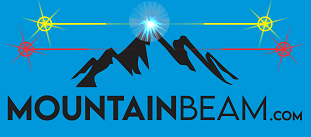
Measuring Service Speeds
This document is intended to be informational and does not replace or alter the legal terms and conditions of service.
Mountain Beam’s broadband Internet services are available at different upload and download speeds and price points depending on the uses that the customer wants to make of the broadband connection (e.g. email, web browsing, video and audio streaming, gaming, or downloading large files). The specific levels of Internet service that are available are identified here. Our network is a combination of software and networking assets that are responsible for the speeds from the customer owned antenna to the tower and then to the internet. Our metric for testing speeds is wifiman.com where is destination server is San Jose, California.
Mountain Beam engineers its network to achieve the “up to” speeds for each of the service levels offered, we cannot guarantee that individual customers will always experience those speeds. The following variables (which are often out of our control) can affect the actual speeds experienced by a customer:
Signal strength of a customer’s antenna, misaligned antenna, foliage that impacts the required 10 ft. wide beam for line-of-sight to the tower, improper mounting location where metal, or other transmission devices may impair the signal.
Improper antenna to home router cabling. Exposed cable is recommended to be UV rated and secured to building or buried underground to prevent damage from weather or animals. There is also a maximum cable length, about 300ft for CAT7 where the antenna will not have enough voltage to properly operate. Inadequate or wrongly crimped connectors combined with temperature changes can cause the connector to partly fail affecting speeds.
Performance of a customer's computer, including its age, processing capability, its operating system, the number of applications running simultaneously, and the presence of any adware and viruses.
Type of connection between a customer's computer and home router. For example, wireless connections may be slower than direct connections into a router. Wireless connections also may be subject to greater fluctuations, interference and congestion. Mountain Beam does not recommend wireless home router’s that transmit 5Ghz signals. We recommend wired local area network (LAN) and 2.4 Ghz home Wifi be utilized on the client’s site.
The distance packets travel (round trip time of packets) between a customer's computer and its final destination on the Internet, including the number and quality of the networks of various operators in the transmission path. The Internet is a "network of networks." A customer's connection may cross the networks of multiple providers before reaching its destination, and the limitations of those networks will most likely affect the overall speed of that Internet connection.